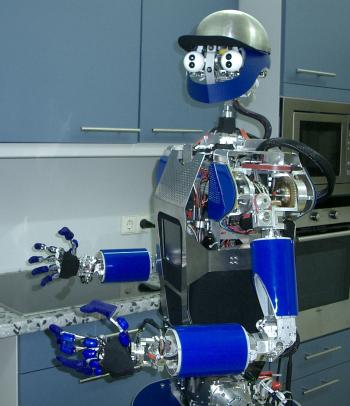Humanoid Robots – Learning and Cooperating Multimodal Robots

“In order for robots to actually be accepted by humans, they should be as similar to humans as possible,” stresses Professor Rüdiger Dillmann, spokesperson for the collaborative research project. But this means more than merely a human exterior. The robot is also supposed to move via a system that imitates human motion. “It will therefore be possible for people to develop trust in an intuitive interaction with the robot,” says Prof. Dillman. Communication must also occur intuitively for people. People must be able to understand the robot’s language and properly interpret its gestures. The robot should be able to have conversations with others, and to get to know new people and new objects.
The scientists see the household as one example of a future field of activity for the robots, and they also believe that these diligent helpers will be able to provide services in the public and commercial domains. It is conceivable that humanoid robots will one day make it possible for elderly or handicapped people to lead independent lives in their own homes.
Over 40 scientists and 13 research institutions are taking part in this collaborative research project, which is led by the Department of Computer Science. These scientists belong to the Departments of Computer Science, Electrical Engineering, Information Technology, Mechanical Engineering, and Sport Sciences, as well as the Karlsruhe Research Centre, the Computer Science Research Centre, and the Fraunhofer-Gesellschaft (IITB). The collaborative research project is working with multiple prototypes that are constantly being redeveloped and refined.
Further Information: SFB 588
